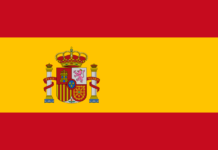Known as land of Chakor, Pakistan’s wetlands provide breeding ground for migratory birds arriving from the Central Asian Republics (CARs) and Siberia owing to an enlargement of forestry cover and increase of weeds, insects, plants and suitable winter conditions.
Lies at the crossroads for birds migration, Pakistan’s wetlands, arid and semi arid areas draw influx of migratory birds, including houbara, cranes, geese and ducks mostly from freezing Siberia, the CARs and even Europe during harsh winter season owing to substantial enhancement in their forest and wildlife habitats.
“These birds mostly arrive through the international migration route known as the Indus Flyway (IF), from Siberia and the CARs by passing through Karakoram, Hindukush, and Suleiman ranges along the Indus River via KP to downwards Sindh,” said Dr Mumtaz Malik, former Chief Conservator Wildlife while talking to APP.
He said houbara population mostly arrive Pakistan in October-December due to limited resources of food in the freezing CARs and returns in March-April to their native areas. Besides wetlands, the desert plains of Punjab, Sindh, KP and Balochistan are the houbara, ducks, geese and cranes wintering habitats where sufficient food is available for their natural breeding.
Houbara’s flocks mostly land in Bannu, Lakki Marwat and DI Khan in KP, Bahawalpur, Rahimyar Khan, Dera Ghazi Khan, Cholistan in Punjab, Tharparkar Sindh and Balochistan, he said, adding that they eat insects, wild fruits, small reptiles and twigs.
Dr Mumtaz said houbara is very sensitive bird and it does not use the route again if they sense any danger on their way during the first journey, adding the bird move quickly as it takes only few days to reach Pakistan. “The weather determines the exact timing of travel as the large bird has to avoid harsh weather and snowfall in flights,” he added. “The population travels in groups having a chieftain and once they looses their chieftain, the deputy guides the group to reach its destination.”
The wildlife expert said houbara can’t stay in severe coldness and Pakistan’s climate is ideally suitable for them during winter for breeding, adding in case a houbra looses its mate, the endangered specie takes three to five years to find a new one.
Dr Mumtaz pointed out that one of the reasons of houbara decrease is the rivalry between its newborn. “The sibling hatching first usually kills the other,” and it lays only two eggs in life. He said artificial breading is being carried out in the UAE, Saudi Arabia and Morocco under extremely controlled condition and is very expensive.
Since all migratory species are hunted and ducks are mercilessly killed every year in the range states, including Pakistan, he said, the population of some duck species, including white-eyed pochard, marbled teal and garganey has drastically decreased.













